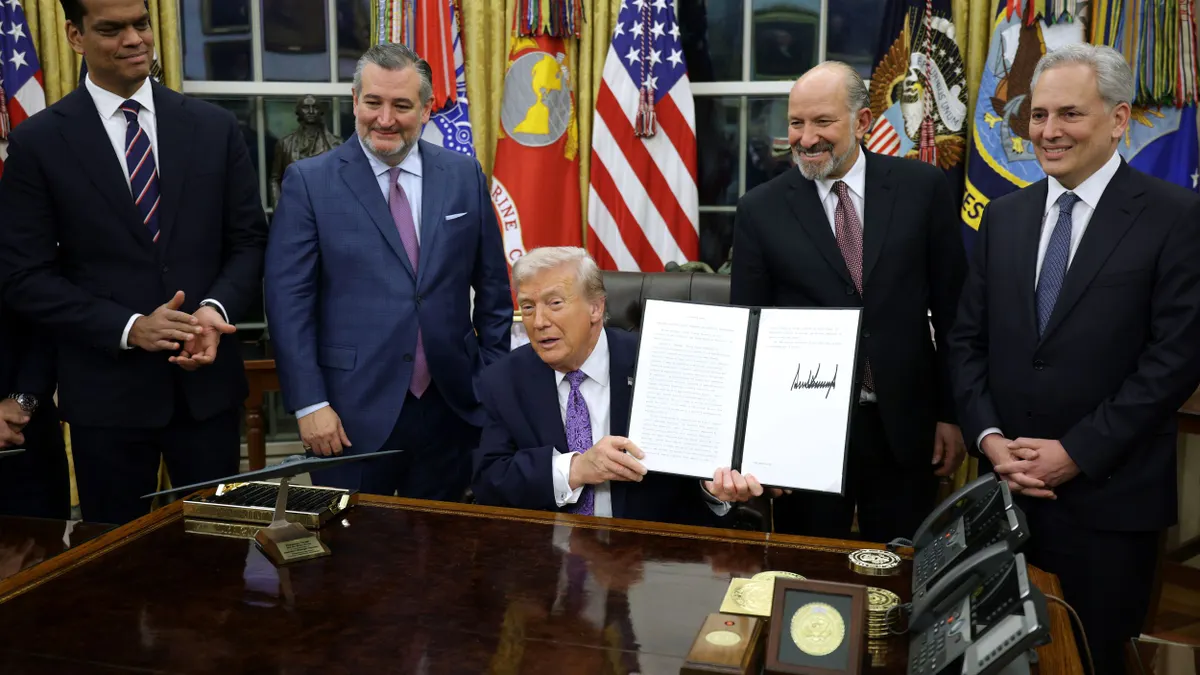Steve Black is chief strategy officer for Topia, a global talent mobility platform. Views are the author's own.
For the past several years, the H-1B visa program has been plagued by uncertainty. First, Trump administration rules reduced the number of visas issued and attempted to impose changes on the current lottery system. Then, COVID-related international travel restrictions prevented H-1B workers from physically coming to the United States for work.
Now, with the last of these restrictions overturned and international travel into the U.S. resuming, the H-1B visa program is relatively more accessible. Although caps still exist and the cost of filing an application is going up, the H-1B program could help companies, especially in the tech sector, overcome talent gaps amid a massive workforce shortage.
While this development provides a valuable opportunity to bolster the talent pool, employing H-1B workers also comes with some significant compliance risks, especially in the era of remote work. That means companies must be prepared with the right strategy and technology to make the H-1B program run smoothly.
Why not just hire foreign talent remotely?
You may be wondering, "Why bother with the H-1B issue at all?" You could just hire foreign talent in place and allow them to work remotely from wherever they are. Certainly, the technology exists to support that model and many organizations have adopted this approach, but it’s also not always practical.
For many years, over half of H-1B visas were awarded to Indian nationals, followed by China, while a handful of other southeast Asian countries supply more talent than Canada, Mexico, the U.K. and France combined. Hiring across multiple time zones means having key talent working the exact opposite schedule of your domestic workforce — a factor that would make collaboration extremely difficult, even through online communication tools like Zoom and Slack.
To meet both your organization’s and your employees’ needs for connection, collaboration and inclusion, regular face-to-face time (whether in person or on Zoom) may be essential. That means having colleagues at least on the same continent.
H-1B remote work comes with stipulations
While H-1B visas solve the time zone problem, employers must still adhere to rules for H-1B workers who work remotely. The Labor Condition Application (LCA) requires companies to afford H-1B workers the same conditions and opportunities as U.S. citizen employees, including benefits like working from home or remotely. However, the location of all worksites must be noted on the LCA and notices must be posted at each worksite location — including the employee’s home.
For any new H-1B employees, this is no problem: just be sure to include their home address on the LCA. But for existing workers whose LCAs were filed prior to the shift to remote work, the rules are a bit more complicated. If the employee will work within a normal commuting distance or within the same metropolitan statistical area (MSA), there’s no need to file an amended H-1B or LCA.
It gets a bit stickier for locations outside that range. There are basically two options. H-1B workers can be placed at any site not listed in the LCA for up to 30 workdays a year or up to 60 days with stipulations; the employee must maintain an office at their permanent worksite, spend a substantial amount of time there and their place of residence must be located in the area of the permanent worksite, not the 30-day short-term one mentioned above.
That means if an H-1B worker works outside the MSA for more than 30-days — which includes any business travel or personal trips where they perform any work — the employer must file a new LCA and new H-1B petition. In addition, H-1B wage requirements dictate the employer must pay the prevailing wage in the new location, along with the cost of lodging, meals and travel expenses.
Tackling the talent shortage demands global talent mobility
As U.S. employers get increasingly desperate to fill vacancies, there’s no doubt we’ll see them become more creative in their approaches. And with the multitude of complexities in modern talent management — remote work, distributed teams, business travel implications and H-1Bs — having a robust global talent mobility solution in place is essential for handling all the moving parts.
Companies must have digital technology to track the working location of every employee, foreign or domestic, to ensure compliance with visa and/or tax entities. You need to know not only where they are, but also track length of stay to avoid immigration risks and tax penalties or overpayment.
While H-1B visas may not be the panacea to the current talent shortage, they can be a vital component in a broader talent strategy to help your company compete in the new world of work. By putting the right solutions in place to manage the complexity of it all, companies can be creative and maximally leverage the talent resources available to them with confidence and compliance.





















